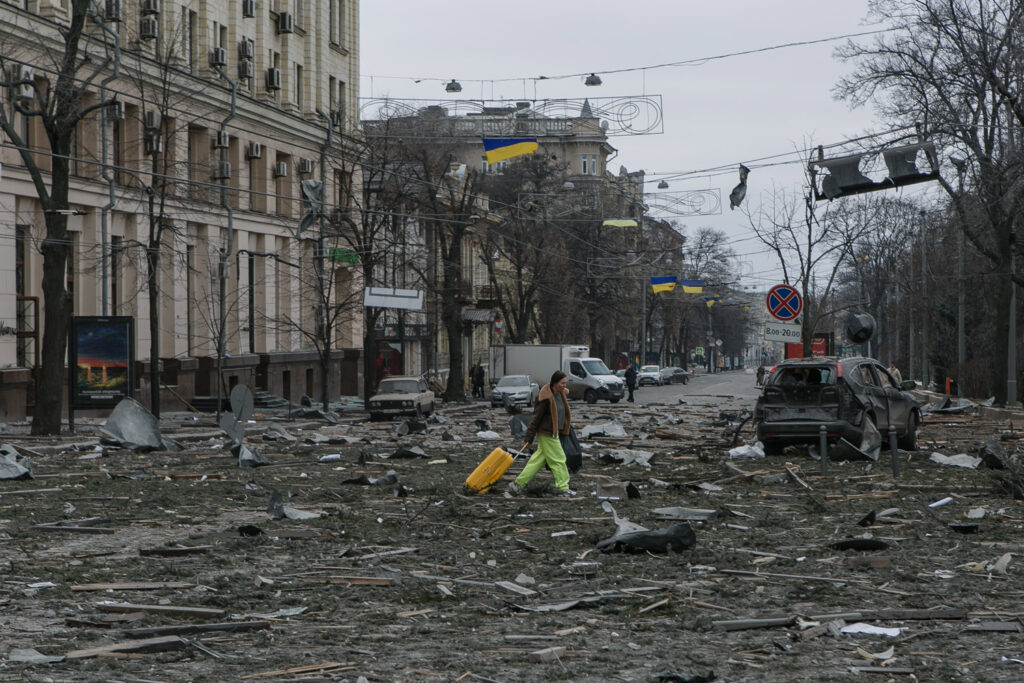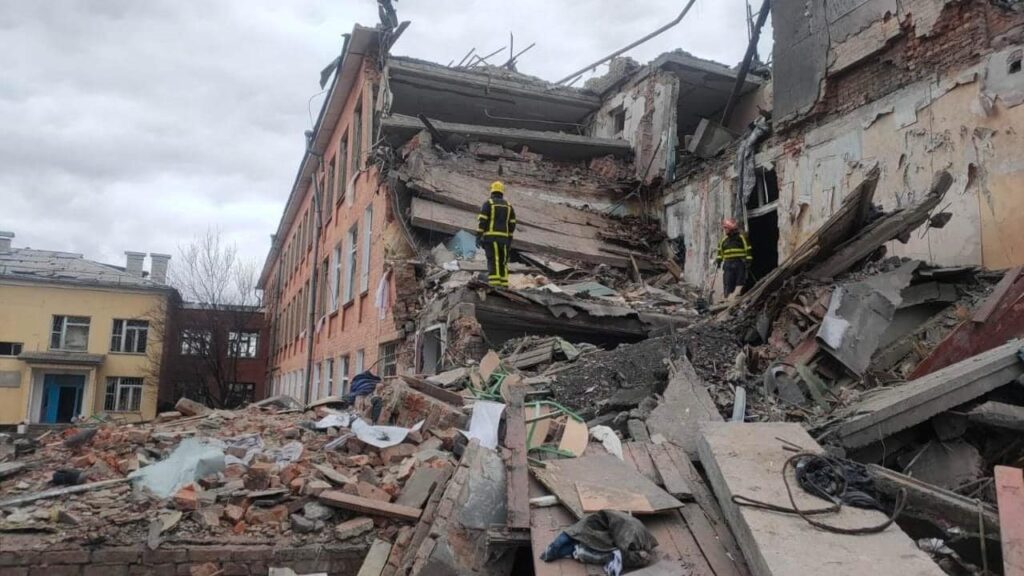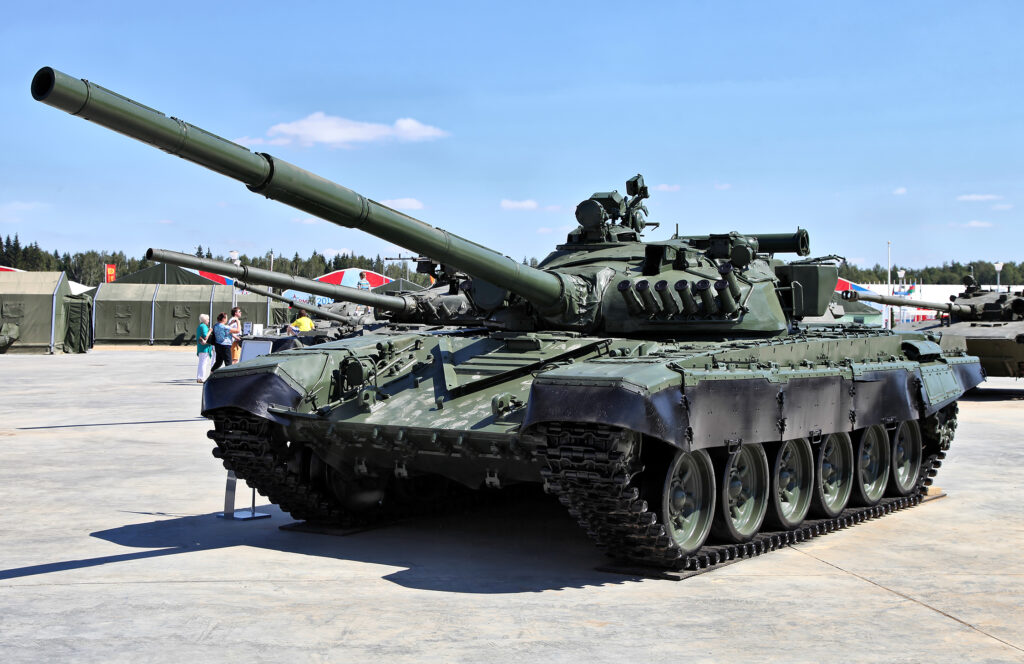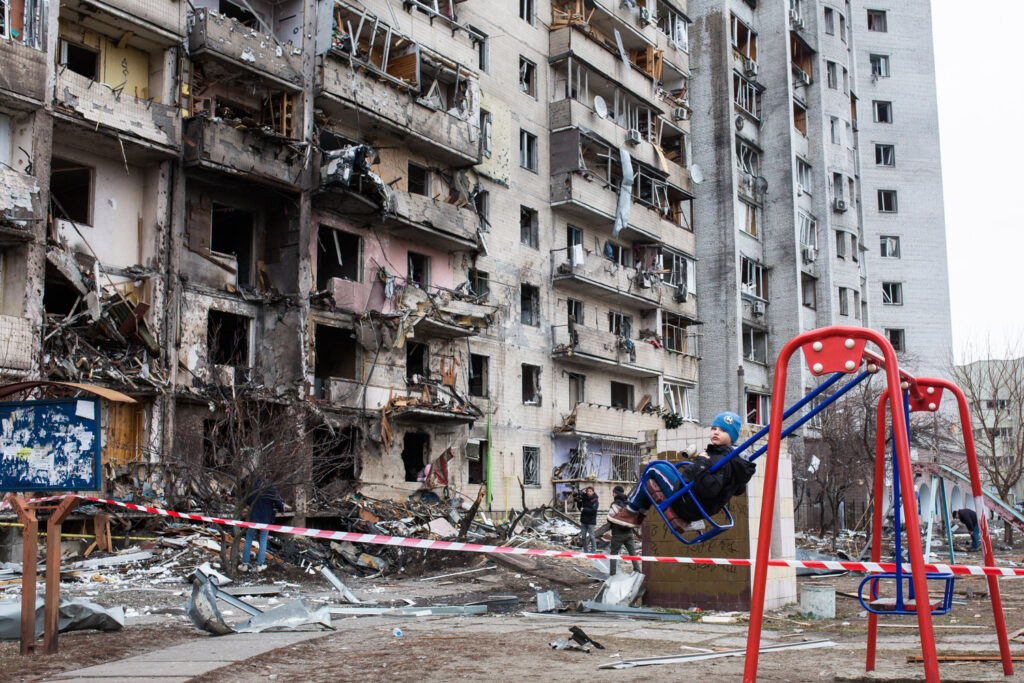However Russia ends the aggression against Ukraine, its hatred and its need for revenge, and the conviction in its own power and rightfulness, do not seem to be going anywhere, the Commander of the Estonian Defence Forces, Lieutenant General Martin Herem, writes.
We are all waiting for the end of the war between Ukraine and Russia. It is widely believed that to end this war, the Russian Federation must withdraw its troops from the Ukrainian territory, including from eastern Ukraine and Crimea. This is what we all want and hope for. Let’s imagine that it will happen. But what will our situation be then? There are a few factors that do not allow us to see the future too positively.
For the moment, let us leave aside the scenario in which the troops have physically left the Ukrainian territory, but Russia still has the capacity to bomb from a distance. Let’s imagine that the war at least “freezes” for a while at the 2014 borders.
Firstly, Russia has officially and publicly declared a large part of Ukraine as its territory. However wrong this may be under the international law, Russia has declared it repeatedly and publicly: “It is part of Russia and we intend to defend it if necessary.” It is difficult to imagine what pretext Russia will give for ending hostilities in a situation where it no longer controls these territories. How would the “mighty Russia” explain such behaviour to its own people, and how would it demonstrate it to the West – its rival? If Russia does not give up these demands – and today this is hardly plausible – peace will be created on very fragile ground.
Secondly, the justification for war has changed during the war. This is the case in the Russian leadership, in the media and in society.
Russia is ridiculing the suffering of the Ukrainian people
If the initial desire was to “denazify” and demilitarise a “dangerous Ukraine”, and this was mainly linked to the Ukrainian government in Kyiv, today such expressions are not much used. More and more we hear about NATO or the EU “satanists and paedophiles” against whom Russia is at war. The war has increasingly become a “holy war”, a fight against a phenomenon that is totally unacceptable and dangerous to the Russian culture and values. How does the Russian leadership explain the loss of territory and the defeat of its values?
Thirdly, there is a change of attitude towards Ukrainians as a people. Since the summer, the Russian media have increasingly begun to ridicule the suffering of the Ukrainian people, not the government.
For example, on Russian state television, politicians promise to send a rocket to children in Kyiv for Christmas. The programme also suggests that elderly women in Ukraine should pay for their own rape with their coffin money.
With millions of Ukrainians without electricity, the Russian news channels laugh at the Ukrainians’ “inability” to use generators or gas stoves, causing fires. With a sneer, they talk about Ukraine’s “killer generators”. Television broadcasts suggest destroying civilian infrastructure as this will force the Ukrainian people (!) to surrender. “Otherwise, they will drown in their own filth or die of the epidemic it causes.” In one TV programme, it is openly stated that, if necessary, a whole generation of Ukrainians must be killed, if not millions – so that Ukrainians will never again have a non-hostile attitude towards Russia. Step by step, an emotional justification for genocide is being created.
But at the same time, they portray Ukrainians as a ridiculous mass against whom Russia could fight at any time.

Putin’s seed of hatred found fertile soil
There is also a fourth, a still-growing development of attitude that could sustain hatred and enmity for decades. Tens of thousands of dead Russian soldiers have lost their lives at the hands of Ukrainians and because of Western support. But their family members and friends believe that Russia’s enemies – Ukraine and the Western countries that supported it – are to blame for these losses. Even more Russians have lost their health [in fighting against Ukraine]. The injured warriors will continue to shape the future and remind everyone else of the (lost) war. In a grotesque way, the concomitant effect of the Russian mobilisation is also evident here – the society is entangled in hatred.
Against this background, it should be stressed that in Russia today, it is the dumb decisions of generals and officials that are being criticised, not the government’s mistake in escalating the war on 24 February last year. Also, among the Russians who did not want to go to war and left the country, there are many who do not necessarily oppose the Russian government’s decisions to behave as it does a state. Putin’s seed of hatred has found fertile soil.
Let us now re-imagine a situation in which, as far as we are concerned, the troops of the Russian Federation have left the Ukrainian territory. However, in the minds of Russians, they have left the Russian territory.
They have left because the ridiculous Ukrainians, who represent the West’s decadent values, aided and abetted by the West, have kicked the “mighty Russia” out.
The result is a relatively large economic recession, isolation, the anger of loved ones of those who lost their lives in the war, disabled war veterans in the streets who resemble defeat, and Kyiv ruling over the territory declared as Russia.
Non-military means to create new conflict conditions
There is no need to fantasise about what could be the incentive for Russia to show its military might and take revenge anywhere and at any time. After all, the efforts of the three Baltic states to support Ukraine are well known. Also, the efforts of Poland, the UK, the US – but they are big…
Of course, Russia is also using non-military means to create new conditions for a conflict. The effects of the war reach us [in Estonia] too – at least partly, the war has caused inflation, economic recession and energy crisis. We have accepted war refugees from Ukraine and the benefits offered to them could be used to raise our own living standards. There is a growing feeling that although it is all Russia’s fault, other, richer countries have not taken on the burden we have.
Some believe that we have supported Ukraine militarily more than we could and have thereby reduced our defence ability in the event of possible aggression. All these views are probably not an information operation organised directly by Russia. But these effects are certainly elements of a hybrid war that Russia can exploit.
These are probably also socio-psychologically inevitable and perhaps natural processes in such a military conflict. However, they are certainly not to our advantage, because in such a situation, there is a tendency to defend one’s own positions more vigorously and to attack those of the other side more aggressively. Sober thinking, however, suffers. Actual preparation for danger suffers. But we desperately need calm thinking for the future. As outlined above, however Russia ends the aggression against Ukraine, the hatred and the need for revenge, and the conviction in its own power and rightfulness, do not seem to be going anywhere.

Russia could attack its neighbours
We must, of course, focus first on victory in Ukraine, because on the road to a better future, that is the first and inevitable goal. Secondly, we must be ready for the next aggression against us, our allies and our values. Just as we fear fire, even if we do not think it is likely to happen today or tomorrow, we must be ready for it.
Despite heavy losses in manpower and technology, Russia has the potential to launch a military offensive against some of its neighbours. Thousands of tanks, armoured personnel carriers and artillery are sitting in Russian warehouses. They may not be operational and are morally obsolete, but out of three or four, they can certainly put together one that works.
Having declared mobilisation, the Russian government can also increase the workload and capacity of the respective industries. For example, even before the war, Russian factories were producing close to two million rounds of artillery ammunition a year. Doubling this is probably not impossible. To date, Russia has deployed perhaps 10 per cent of its S-300 anti-aircraft missiles, which are used to attack ground targets 70 kilometres [43 miles] away in Ukraine. As far as is known, no anti-aircraft missile has yet been able to destroy the Russian S-300s.
It is not too difficult to mobilise hundreds of thousands of relatively well-motivated people from a nation that has lost the war (if that’s the mindset). The elementary training of motivated soldiers is then rather a matter of execution. In the absence of intensive warfare, there are plenty of instructors – at least enough instructors, and with enough experience, to generate confidence.
The situation is much better for Russia in the air and at sea. In ten months, they have lost less than 10 per cent of their air force and even less of their navy. One might think that Russia lacks modern technologies, but it does not need very much 21st century technology to build a “dumb” but massive and dangerous army. Perhaps they even find those who help with the technology. It could all be difficult for Russia, but there seems to be no lack of motivation.
No difference which weapons Russia uses to kill people
Not to describe a specific possible scenario, but to describe a military threat, let us imagine Russian aggression in a few years’ time towards the Baltic states. Let the aim of such aggression be, for example, to break down the stability in our societies and between our allies by demonstrating Russia’s military might.
Estonia’s border with Russia is more than 200 kilometres [124 miles] long, Latvia’s less than 200. Let’s imagine that during the [Russian military] exercises, about 1,000 tanks, 4,000 armoured personnel carriers, 1,000 artillery systems and 100,000 soldiers will be concentrated on our borders.
Does it make much difference to the average person, including a trained reservist, whether it is a T-62 or a T-72 tank? Or whether it is BMPs or MTLBs [Russian infantry fighting vehicles – editor] that come to attack? Will we be fired upon from a distance of 20 kilometres [12 miles] by self-propelled or towed 152 mm howitzers? Will the 100,000 soldiers be professionals or conscripts with one year’s training and mobilised? Are the attack weapons reaching Tallinn and Riga the Kalibr missiles or Iranian “drones”? Does it make any difference to the inhabitants of Jõhvi, Tartu or Võru which missile carrying at least 100 kilograms of explosives hits them?
Most people would probably answer that it makes no difference. But that is the essence of an old, outdated, outmoded threat that requires little training. Let us imagine that, to attack the Baltic states, Russia mobilises against Estonia and Latvia the means listed above. With its annual artillery production alone, it could, in the event of a month’s aggression, fire 166 rounds per kilometre every day, or more than 66,000 rounds per day on a whole 400-kilometre [250-mile] front. That is more than today in Ukraine, where the active front line is almost as long.
It makes no difference whether Estonia is attacked with T-62 tanks several decades old or with brand new T-90 tanks – it will still take Javelin or Eurospike missiles to destroy them. The same goes for the enemy’s soldiers, air assets and so on – against the masses coming against us, you still need weapons, ammunition and the skill to use them.

Can’t underestimate Russia’s aggressiveness
This means that we need to develop our military capabilities on a sustained and systematic basis, so that we are ready to face an adversary attacking us with both advanced and old technology, with the understanding that their advantage is and will remain mass.
What is our advantage? First, we have no choice – it is our country and the better motivation that comes with it. Secondly, we are playing on our home pitch. Thirdly, our training is better. Fourthly, we and our allies have the mass of high technology over our opponents.
In the light of the foregoing, we have no right to underestimate Russia’s aggressiveness in the future, and there is no reason to believe that a Russian defeat in Ukraine will end the threat that lies ahead.
There is no single silver bullet against such a threat. But it can be beaten back. And, in all likelihood, by preparing for it, it can be prevented. In any case, the Estonian Defence Forces will do their best to do so.
This article was published in Estonian on Lt Gen Martin Herem’s Facebook page, and translated and mildly edited by Estonian World.
The opinions in this article are those of the author.

